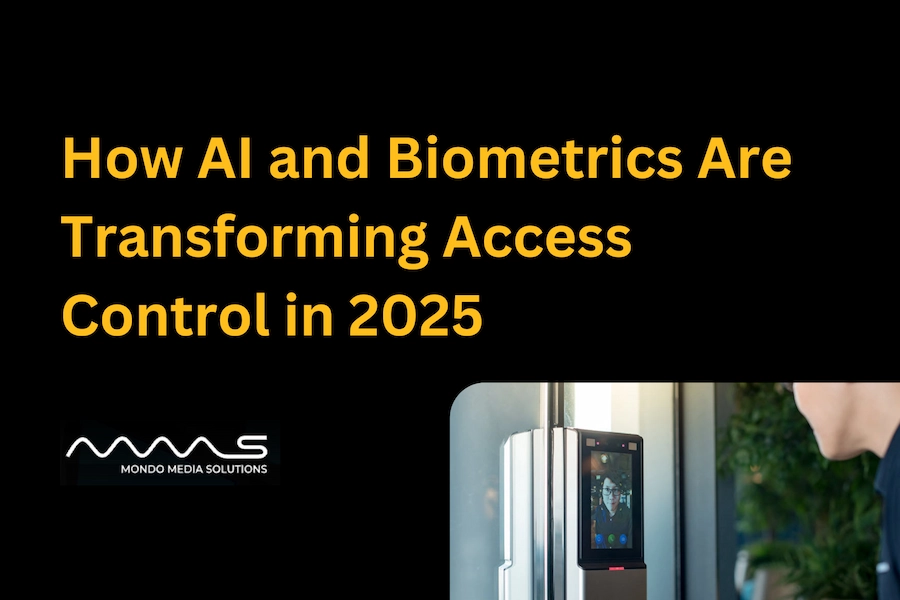In 2025, the fusion of artificial intelligence (AI) and biometrics is revolutionizing access control systems. This transformation is not just about enhancing security but also about improving user experience and operational efficiency. Businesses, institutions, and government facilities are increasingly adopting AI biometric access control solutions to meet the evolving demands of security and convenience.
The Rise of AI in Access Control Systems
AI has become a pivotal component in modern access control systems. By leveraging machine learning algorithms, these systems can analyze vast amounts of data to detect anomalies, predict potential security breaches, and automate access decisions. This proactive approach reduces the reliance on human intervention and minimizes errors.
For instance, AI can monitor access patterns and identify unusual activities, such as repeated failed access attempts or access at odd hours, allowing security teams to address potential threats promptly. This level of intelligence is particularly beneficial for access control installation companies, as it enables them to offer advanced, AI-driven solutions to their clients.
Integration of AI and Biometrics: A Synergistic Approach
The combination of AI and biometrics creates a robust and adaptive access control system. AI enhances biometric systems by continuously learning and adapting to new data, improving the accuracy of identity verification and reducing false positives. This synergy ensures that access control systems remain effective even as user behaviors and environmental conditions change.
Moreover, AI can manage and analyze biometric data more efficiently, streamlining the access control system installation process. This integration allows for quicker deployment and easier maintenance of access control systems, benefiting both service providers and end-users.
Industry Applications and Use Cases
Corporate Offices
In corporate settings, AI biometric access control systems streamline employee access and attendance tracking. Employees can gain entry through facial recognition or fingerprint scanning, eliminating the need for physical keys or cards. This not only enhances security but also improves operational efficiency.
Healthcare Facilities
Healthcare institutions require stringent security measures to protect sensitive patient data and control access to restricted areas. AI and biometric technologies provide secure and efficient solutions, ensuring that only authorized personnel can access specific zones, thereby maintaining compliance with health regulations.
Educational Institutions
Schools and universities benefit from AI biometric access control by efficiently managing student and staff access. These systems can track attendance, restrict access to certain areas, and enhance overall campus security, creating a safer learning environment.
Government Buildings
Government facilities often handle sensitive information and require high-security measures. AI-enhanced biometric systems provide robust security protocols, ensuring that only authorized individuals can access specific areas, thus safeguarding critical data and infrastructure.
Challenges and Considerations
Privacy Concerns
The use of biometric data raises significant privacy concerns. It’s crucial for organizations to implement robust data protection measures and ensure compliance with regulations such as the General Data Protection Regulation (GDPR) and the California Consumer Privacy Act (CCPA).
Compliance with Regulations
Organizations must stay abreast of evolving data protection laws and ensure that their access control systems comply with all relevant regulations. This includes securing user consent for data collection and providing transparency about how biometric data is used and stored.
Addressing AI Bias
AI algorithms can inadvertently perpetuate biases present in their training data, leading to unequal treatment of individuals based on race, gender, or other factors. It’s essential to use diverse and representative datasets and to regularly audit AI systems to mitigate bias.
Choosing Reputable Installation Companies
Selecting a reputable access control installation company is vital to ensure the proper implementation and maintenance of AI biometric systems. Experienced providers can offer customized solutions, ensure compliance with regulations, and provide ongoing support.
Future Outlook: What’s Next in Access Control?
Multimodal Biometric Systems
The future of access control lies in multimodal biometric systems that combine multiple authentication methods, such as facial recognition, fingerprint scanning, and voice recognition. This approach enhances security by requiring multiple forms of verification.
Integration with IoT Devices
Integrating access control systems with Internet of Things (IoT) devices allows for more comprehensive security solutions. For example, access control can be linked with surveillance cameras, alarm systems, and environmental controls to create a cohesive security infrastructure.
Mobile-Based Biometric Applications
The rise of mobile technology is leading to the development of mobile-based biometric access control applications. Users can authenticate their identity using their smartphones, providing a convenient and secure method of access that aligns with modern lifestyles.
The convergence of AI and biometrics is transforming the future of access control—making systems smarter, faster, and more secure. Businesses that want to stay competitive in 2025 should act now. Partner with an experienced access control installation company to take full advantage of these advancements and future-proof your security infrastructure.


